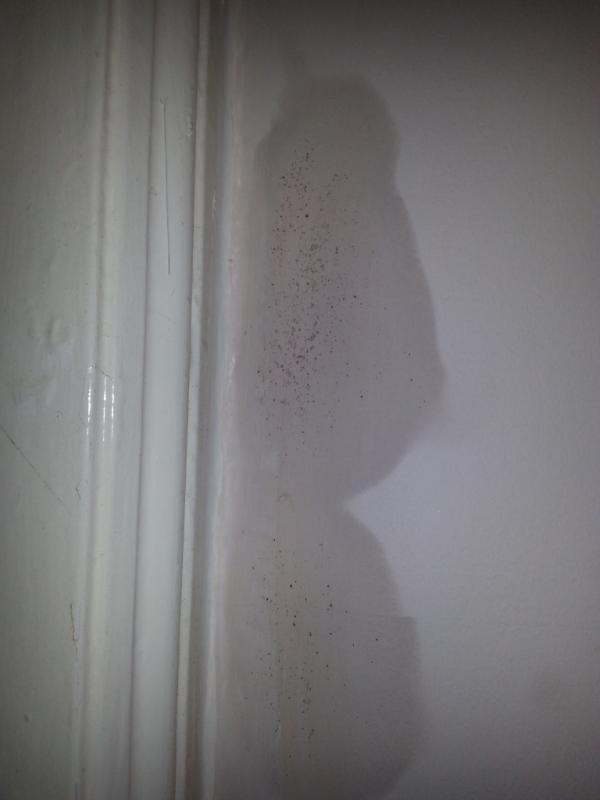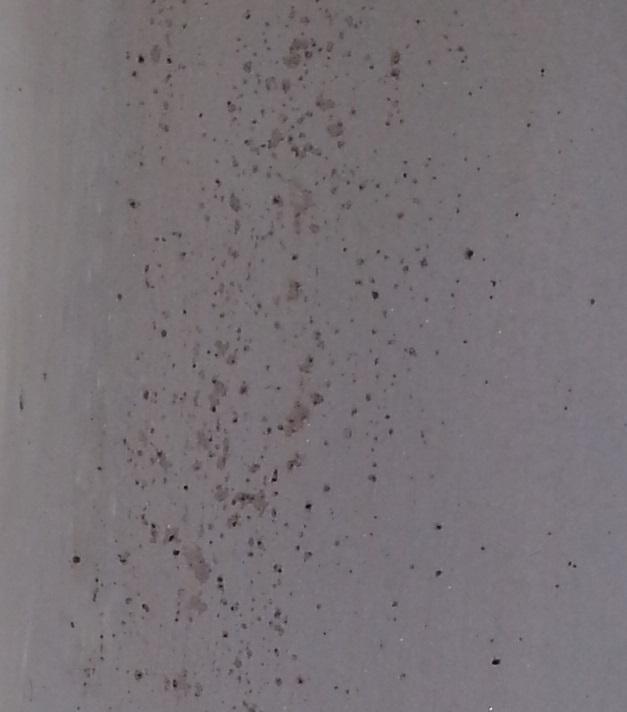Hello,
I'm encountering some strange damp patches on my wall and I've tried a number of small fixes but had no luck so I thought I'd try here. I'm struggling to work out my next step so any input would be very much appreciated.
It's an old 1890s terrace house and the problem is with one of the party walls. I removed the wallpaper in my hallway and had it skimmed just over a year ago. I'm having problems with unsightly damp patches - see attached pictures. The neighbour on the other side isn't having any similar issues.
They appear after heavy rainfall and they eventually dry out. One of them is about 2m high and the other shown by the dado rail is about 1.25m high. Hopefully it'll be clear in the picture but the 2m high one has developed tiny little holes in the plaster. I'm assuming that the plaster is attracting the moisture from the air as there's no sign of damp above or below it to suggest a leak; however, I'm far from an expert.
The paint eventually started to flake off after a number of cycles of the wall getting damp then drying out. I spoke to the plaster who skimmed it and he initially said it may have been an issue with the first coat of paint I applied not sealing the plaster properly. I followed the suggested water-to-paint ratio on paint bucket, but he thought it could've been down to me not mixing it particularly well.
The same problem happened after sanding it down then repainting with a well mixed and watered-down paint. I spoke to the plaster again and he suggested that it may be just a couple of cold spots on wall and I could try sealing it with damp seal. I did this and it delayed the patches reappearing; however, now they're coming through they seem more pronounced than ever. I've since done a bit of research and apparently applying such a seal can stop the wall breathing and trap the moisture in, and this is bad news for the long-term health of the wall.
The only other thing of note is that this area of the wall also had a DCP installed around 15 years ago. I maybe wrong, but I given that one patch is 2m it is too high to be rising damp.
Once again, any advice the next step I should take would be much appreciated.
Thanks,
Phil
I'm encountering some strange damp patches on my wall and I've tried a number of small fixes but had no luck so I thought I'd try here. I'm struggling to work out my next step so any input would be very much appreciated.
It's an old 1890s terrace house and the problem is with one of the party walls. I removed the wallpaper in my hallway and had it skimmed just over a year ago. I'm having problems with unsightly damp patches - see attached pictures. The neighbour on the other side isn't having any similar issues.
They appear after heavy rainfall and they eventually dry out. One of them is about 2m high and the other shown by the dado rail is about 1.25m high. Hopefully it'll be clear in the picture but the 2m high one has developed tiny little holes in the plaster. I'm assuming that the plaster is attracting the moisture from the air as there's no sign of damp above or below it to suggest a leak; however, I'm far from an expert.
The paint eventually started to flake off after a number of cycles of the wall getting damp then drying out. I spoke to the plaster who skimmed it and he initially said it may have been an issue with the first coat of paint I applied not sealing the plaster properly. I followed the suggested water-to-paint ratio on paint bucket, but he thought it could've been down to me not mixing it particularly well.
The same problem happened after sanding it down then repainting with a well mixed and watered-down paint. I spoke to the plaster again and he suggested that it may be just a couple of cold spots on wall and I could try sealing it with damp seal. I did this and it delayed the patches reappearing; however, now they're coming through they seem more pronounced than ever. I've since done a bit of research and apparently applying such a seal can stop the wall breathing and trap the moisture in, and this is bad news for the long-term health of the wall.
The only other thing of note is that this area of the wall also had a DCP installed around 15 years ago. I maybe wrong, but I given that one patch is 2m it is too high to be rising damp.
Once again, any advice the next step I should take would be much appreciated.
Thanks,
Phil




